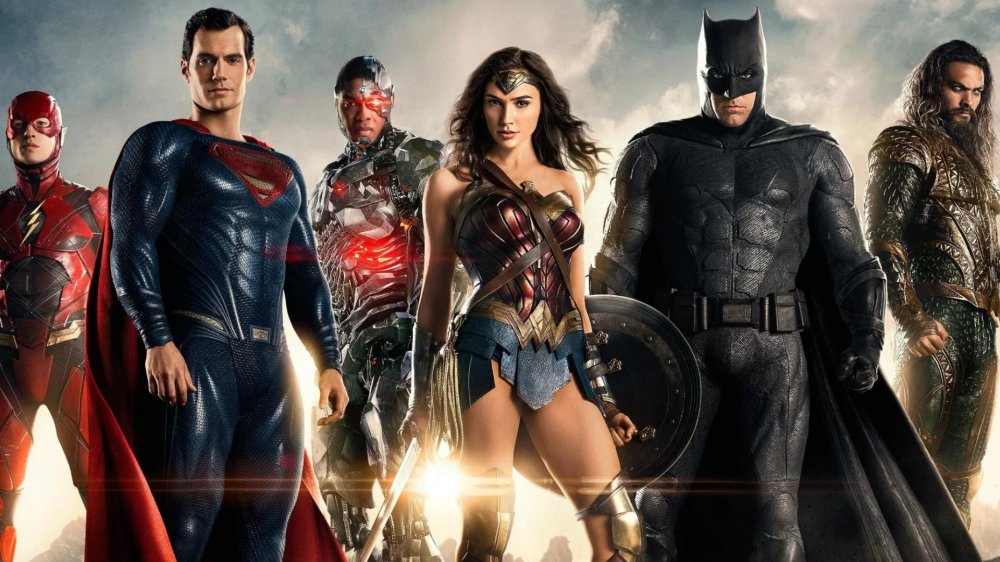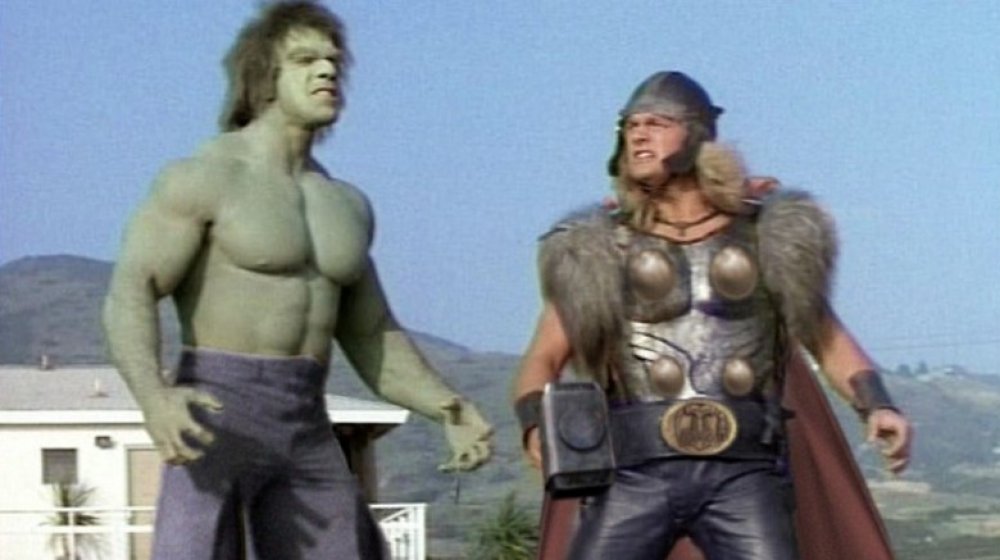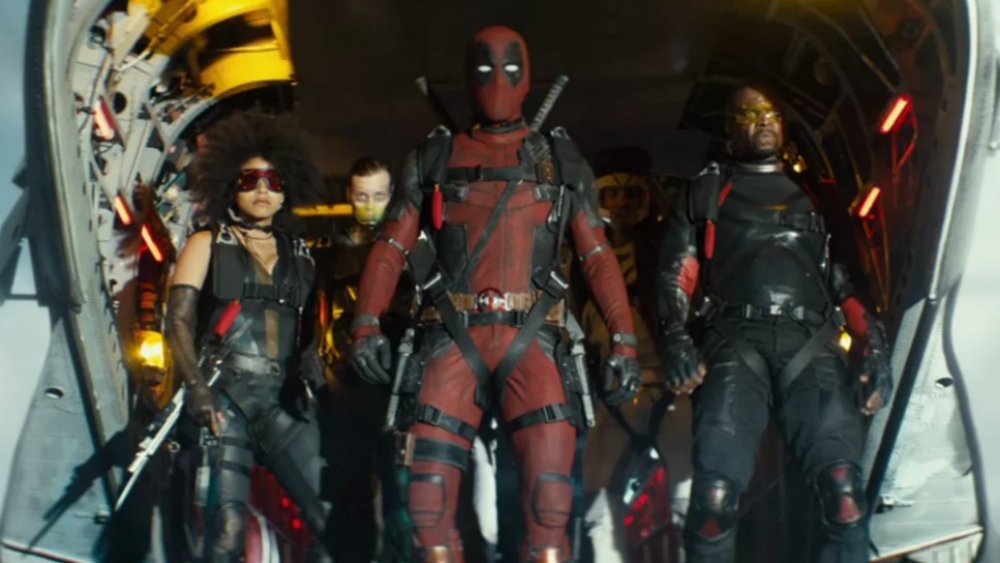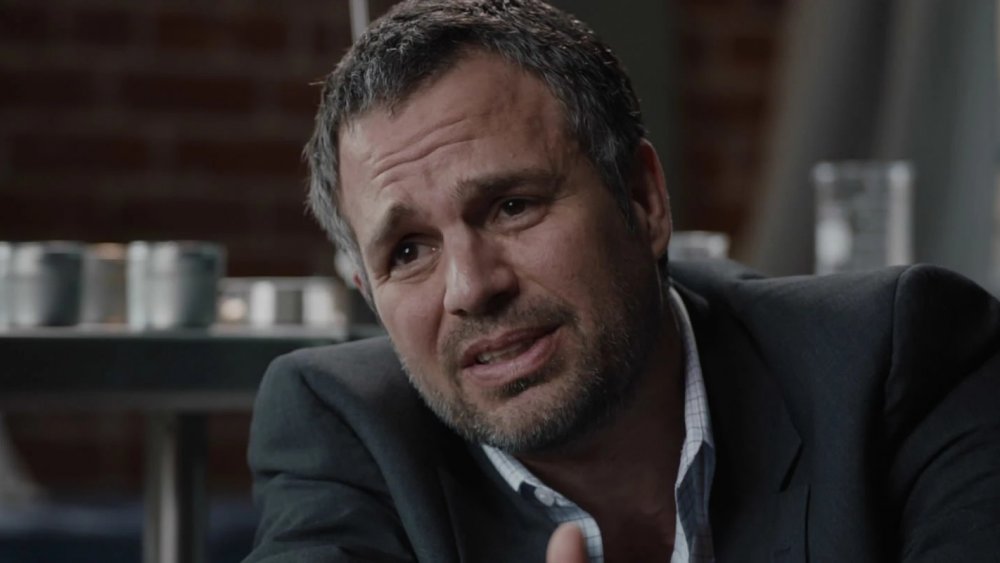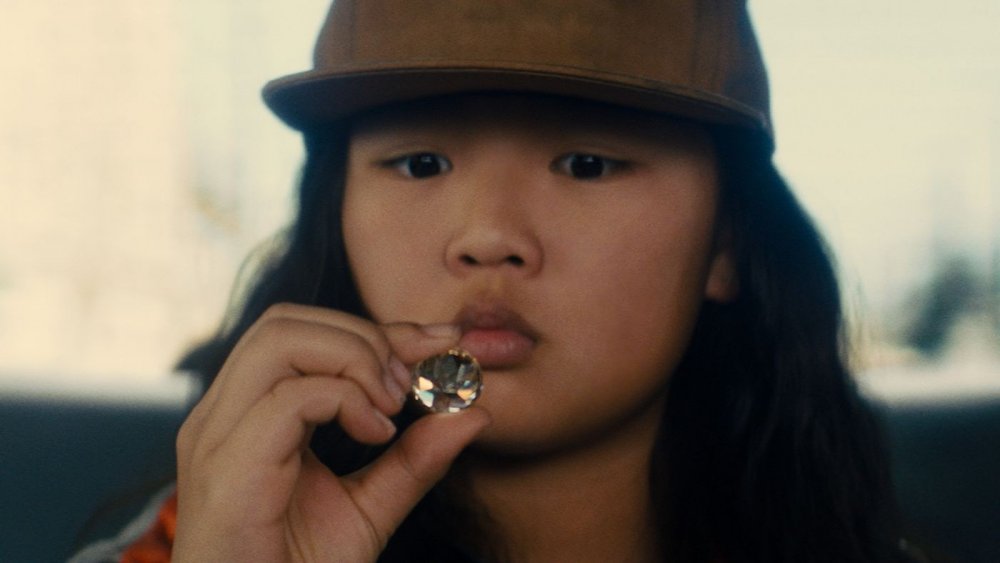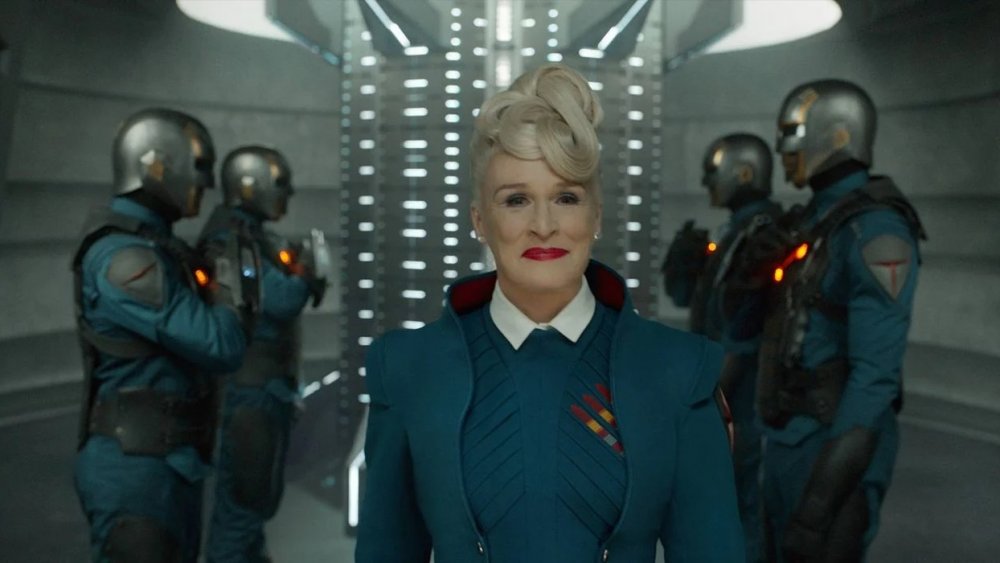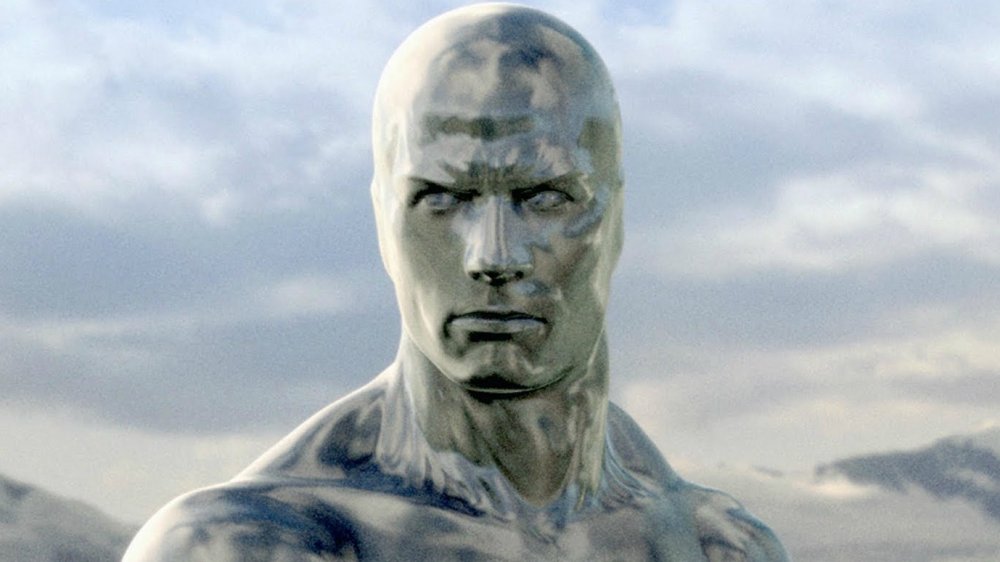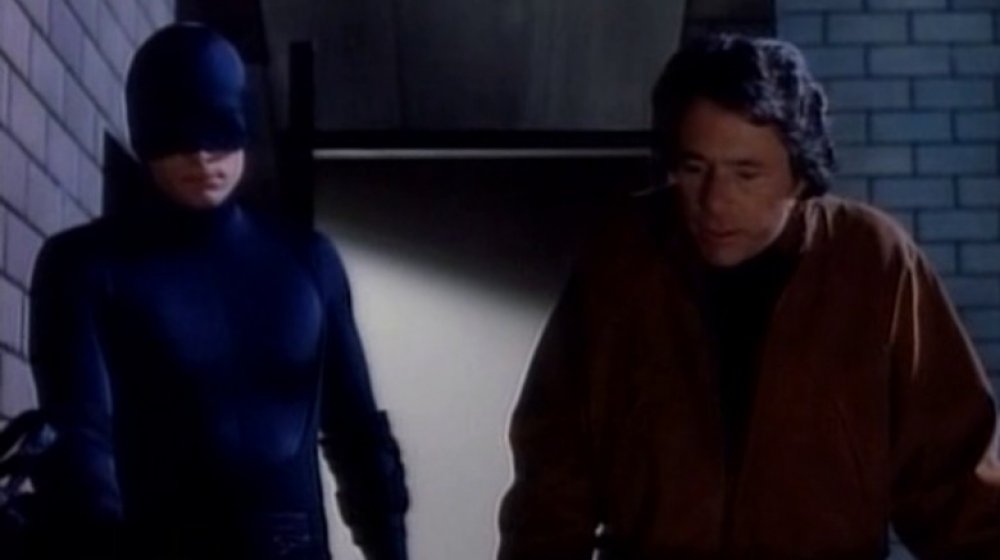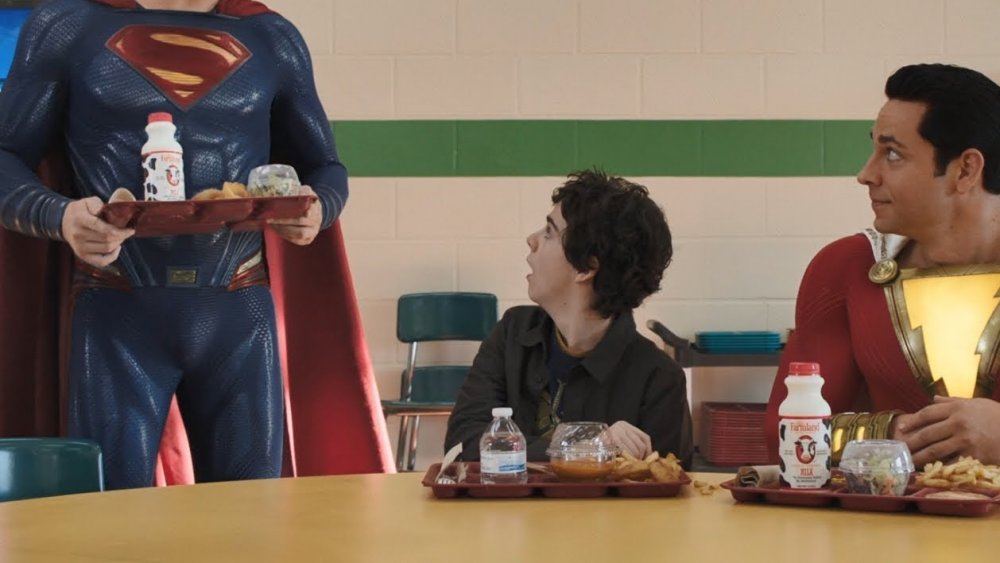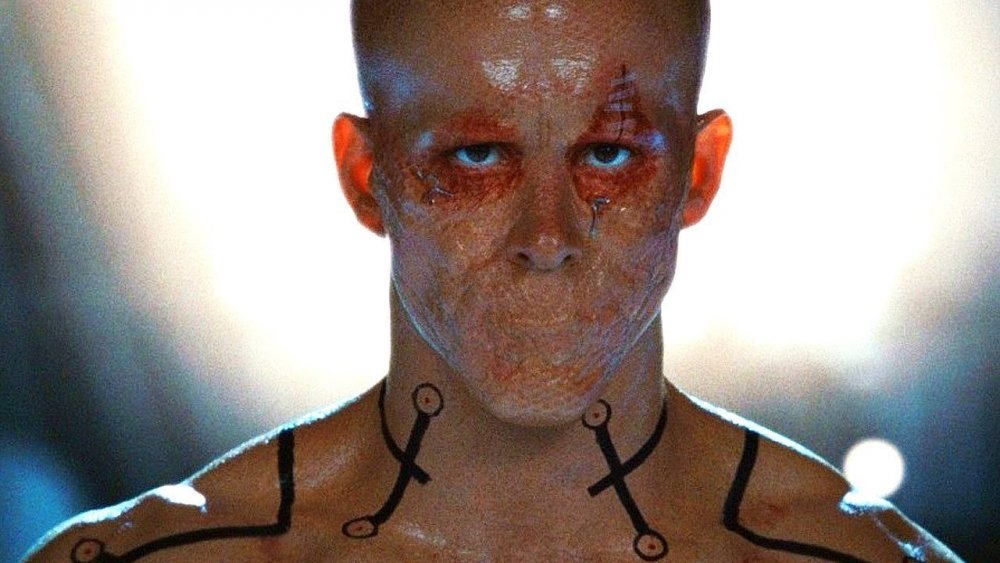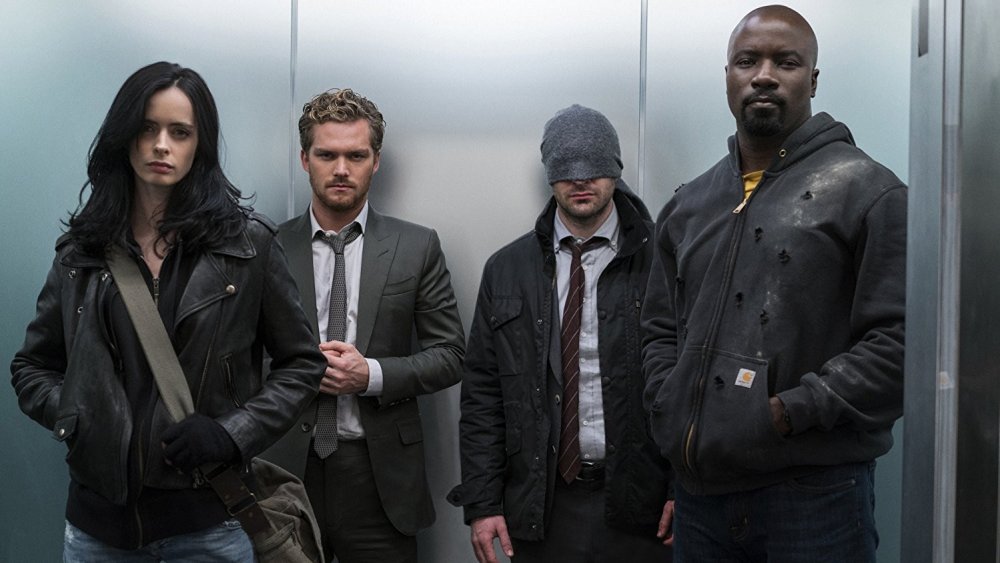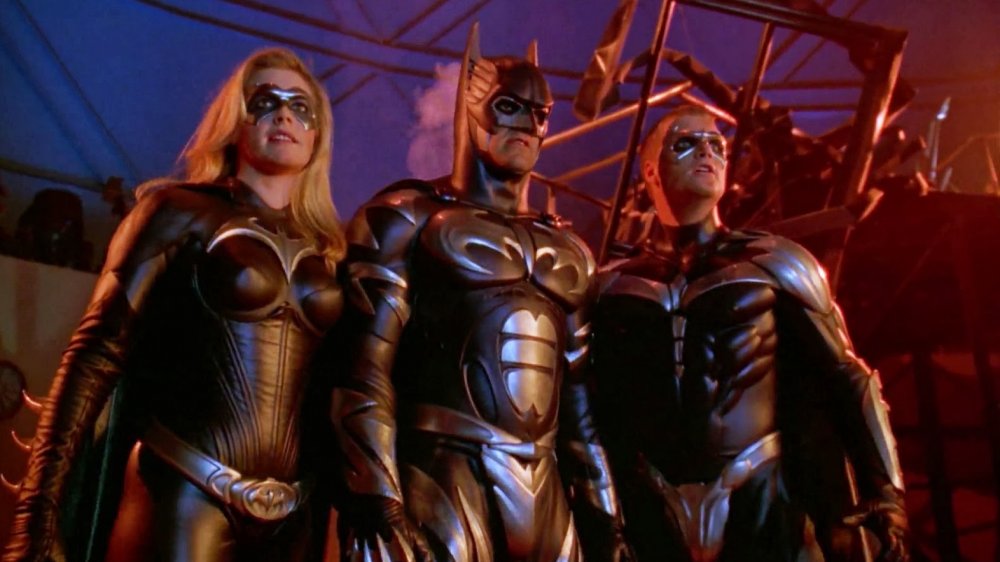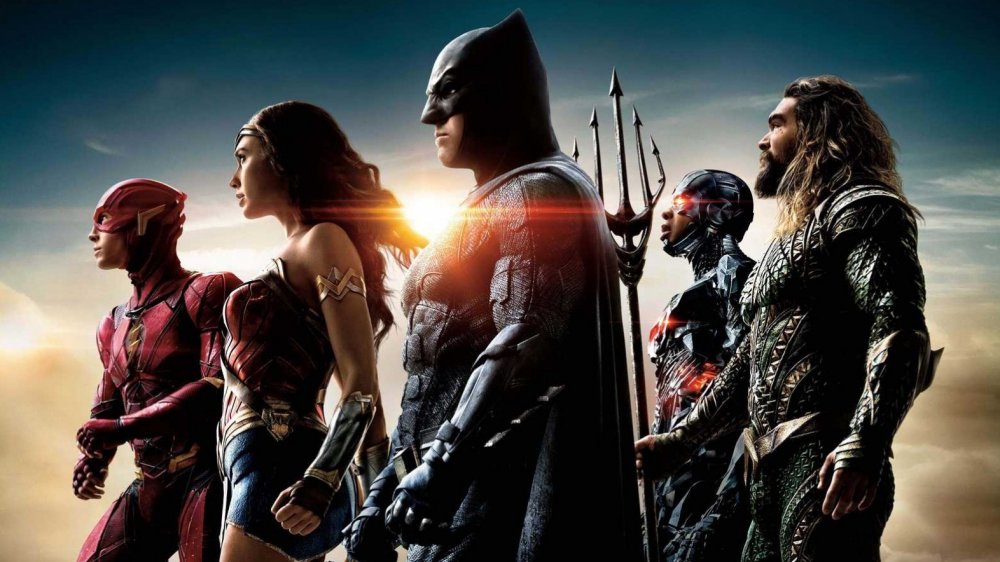Superhero Meetups That Disappointed Fans
It used to be that superhero fans didn't come across a lot of media — beyond the source material, of course — in which superheroes from different franchises would meet. The only superhero in Christopher Reeve's Superman films, for example, was the Man of Steel himself. Likewise, while there was the occasional Easter egg in Sam Raimi's Spider-Man trilogy referring to other Marvel good guys, Spidey was still the only one fighting evil in those movies. Now, with Marvel and DC's competing film narratives, it's practically mandatory that every superhero movie have a guest appearance or two from another crime-fighter.
But not all superhero meetups are as good as we imagine them. As cool as it may seem in the advertisements for Batman and Superman or Captain American and Iron Man to show up in the same movie or TV show, sometimes it's clear it would've been better if the creators had settled on a smaller cast. In some cases, it's because the technical aspects of moviemaking weren't up to it. Other times, the guest appearance just isn't enough for the hardcore fans, and occasionally, the extra heroes just find themselves in a stinker.
Regardless of why they didn't live up to expectations, here are superhero meetups that disappointed the fans.
Hulk and Thor weren't always a smash hit
Long before they were fighting on a helicarrier in 2012's The Avengers or clashing in an arena in 2017's Thor: Ragnarok, the Hulk and Thor had their first live-action throwdown in the 1988 TV movie The Incredible Hulk Returns.
Eric Kramer plays the thunder god, and the much smaller Steve Levitt plays Donald Blake, a man who summons Thor with Mjolnir. When Thor meets Dr. Banner (Bill Bixby), he bullies him and accidentally knocks him into an electrical panel, triggering his change. A brief battle between an enraged Hulk (Lou Ferrigno) and the eager Thor ensues, laying waste to Banner's lab. Later, when Banner's girlfriend, Maggie Shaw (Lee Purcell), is kidnapped as leverage for Banner's technology, Thor and Blake help the Hulk rescue her.
But sadly, Thor looks like he got his outfit from a Spirit Halloween shop, and the battle between the heroes comes off as stilted and awkward. In the source material, a team-up between the Hulk and Thor means facing off against enemies of epic power, while in The Incredible Hulk Returns, they fight bad guys no more impressive than what can be found in any episode of The A-Team or Knight Rider. It would be a few decades for the technology to arrive to stage a live-action clash between these titans that would do their creators' visions justice.
The first appearance of X-Force was funny but short
The year 2018 was a huge one for superhero movies, and it included the live-action premiere of X-Force, the X-Men spinoff team in Deadpool 2. Wade Wilson (Ryan Reynolds) recruits the mutants — and the utterly powerless Peter (Rob Delaney) – to help him save Rusty (Julian Dennison), but with the exception of Deadpool himself and the luck-powered Domino (Zazie Beetz), they all die. Most don't even survive their first parachute drop, though in a mid-credits scene, Deadpool goes back in time and saves Peter (while presumably leaving the rest to rot).
Seen in a neutral light, the brutal deaths of the original members of X-Force are darkly hilarious, particularly the death of the invisible Vanisher, who's only revealed to be Brad Pitt as he's being electrocuted. But a lot of fans went in expecting to at least see these heroes live long enough to throw a punch or two. In fact, Deadpool 2's advertising included shots of Bedlam (Terry Crews) and Shatterstar (Lewis Tan) fighting bad guys, so the disappointment some of the more hardcore fans experienced is understandable.
Eventually, we do see a version of X-Force at the end of the film whose members aren't all sucked into wood chippers or pureed by helicopter blades. We hope they learn from their predecessors' example and pay attention to wind advisories.
Bruce and Tony in Iron Man 3 weren't as super as they could've been
Iron Man 3 opens with the titular hero narrating the story. He takes us back to New Year's Eve 1999, marking his first meeting with future ally Ho Yinsen (Shaun Toub) and future enemy Aldrich Killian (Guy Pearce). We don't get any indication at first whether the narration we hear is Tony Stark's (Robert Downey Jr.) internal monologue or if he's supposed to be speaking to another character. The answer isn't revealed until Iron Man 3's only post-credits scene when we discover Stark has been telling the entire story of the movie to a sleepy Bruce Banner (Mark Ruffalo), who apparently nodded off way back during the flashback to 1999.
It's a funny scene and true to character, as Stark soldiers on with more stories even after Banner reminds his friend that his "temperament" isn't the best for talk therapy. Still, this was Ruffalo's first MCU film after The Avengers, which was our first chance to see a half-dozen Marvel heroes in the same film. So it's tempting — considering Banner isn't a larger part of the plot and that we never get to see the "other guy" — to frame it as a waste of a guest appearance.
Birds of Prey's Cassandra Cain wasn't all she could've been
In 2020's Birds of Prey, Cassandra Cain makes her big screen debut, played by Ella Jay Basco. While she gets in a few shots here and there, for the most part, the young pickpocket spends the entire movie under the protection of the older heroes.
Being a comic book fan and a fan of the movies means accepting changes between page and screen. But the changes made to Cassandra Cain were too much for some fans to stomach, and it's kind of easy to see why. In Birds of Prey, Cain is the only member of the team without any particular physical training or powers. Meanwhile, the comic book version of Cassandra Cain could wipe the floor with the rest of the Birds and deal with Black Mask and his goons all on her own.
In the source material, Cain is most recently known under the moniker Orphan, though she's also been Batgirl. Her training in the League of Assassins and her unique cognitive traits make her perhaps the most formidable of Gotham's heroes. In 2017's Detective Comics #951, when Batwoman asks Batman if he's ever considered what would happen if he had to fight Cain, he answers, "Of course I have. I'd lose." Going from someone so badass even Batman has to admit you'd beat him to the only Bird of Prey who can't fight is a pretty steep drop, you have to admit.
Guardians of the Galaxy gave us a different Nova Corp
Guardians of the Galaxy was a runaway hit. While heroes like Captain America and Iron Man were known quantities before Marvel Studios brought them to the big screen, even some comic book fans didn't have a clear idea who the Guardians were before the 2014 movie. The first Guardians not only proved the franchise's viability, but it was the MCU's first deep dive into Marvel's cosmic mythos. As such, the Guardians got to meet another space-bound Marvel group, the Nova Corps. But even though many of the Corps members looked like the Corps members of the comics, they weren't the group that fans remembered.
In the comics, the Nova Corps is Marvel's answer to the Green Lantern Corps. Rather than rings, the peacekeepers of the Nova Corps wear helmets that give them incredible abilities. While Guardians pays tribute to the source material in many ways, it's a bit of a disappointment to see Xandar's finest without their own superpowers in the movie. There are occasional rumors that this will change in a future Marvel property, but for now, the first Guardians is the last we've seen of the Corps.
Silver Surfer should've stayed in space
One of the major Marvel heroes still missing from the MCU is the often morose and always naked Silver Surfer, but he hasn't been absent from Marvel films completely. He made his live-action film debut in 2007's Fantastic Four: Rise of the Silver Surfer. The world-devouring Galactus was the logical bad guy for the follow-up to 2005's Fantastic Four, and just as he does in the comics, in the sequel, Surfer arrives on Earth as Galactus' herald but eventually changes sides.
Unfortunately, this early adaptation of one of Marvel's noblest of souls didn't go well. Audiences didn't click with the story, the CGI realization of the Surfer was widely criticized, and old-school fans weren't happy about the usually giant, purple-clad Galactus instead appearing as a massive cosmic cloud.
Hopefully, Norrin Radd will eventually get a better introduction to movie audiences. There were rumors he would make a surprise appearance in Avengers: Infinity War, but they eventually proved false. As Marvel Studios does more films based on its space mythos, his reappearance will doubtlessly draw closer.
Daredevil would have to wait for a better TV series
Believe it or not, before Charlie Cox or Ben Affleck played the Man Without Fear, Rex Smith portrayed the first live-action version of Daredevil in the 1989 TV movie The Trial of the Incredible Hulk. While the previous year's The Incredible Hulk Returns didn't yield the hoped for Thor series, Trial tried to bring Daredevil's TV career to life.
In New York City, Dr. Banner is wrongly arrested for offenses committed by men working for crime lord Wilson Fisk (John Rhys-Davies). Matt Murdock is his defense attorney, but he's also the black-clad vigilante Daredevil. Together, they're able to foil Fisk's plans, and Banner leaves NYC behind to let Murdock hope for a TV series that would never come.
Trial of the Incredible Hulk is even more disappointing than its predecessor for a couple of reasons. While it might make more practical sense for a vigilante who works at night to wear all black instead of red, Daredevil's outfit in the TV movie just makes him look like a confused cat burglar. The Hulk, on the other hand, is completely absent from the final act. When the pair fight to save a hostage from Fisk and his men, the expected Hulk-out never comes. Banner remains Banner for the whole time, and no one tuned in for The Trial of the Incredible Banner.
The Superman cameo in Shazam! could've been more
Shazam! is unique among the DCEU films for its lighter tone and comic appeal, but that doesn't mean Billy Batson (Asher Angel) and his super-powered alter ego aren't a part of the same extended narrative as films like Justice League and Wonder Woman. The final moments before the credits roll cure any doubts that Shazam is a part of this larger fictional world.
To help Freddy's (Jack Dylan Grazer) standing in school, Shazam (Zachary Levi) arranges a surprise appearance in their school cafeteria where he proclaims that Freddy taught him everything he knows "about being a dope superhero" and that Freddy is his "best bud in the whole world," loud enough so all the kids in the cafeteria can hear. And right after he warns Freddy that he invited "another friend," a very familiar superhero from Krypton shows up, shocking the young Freddy.
It's a great ending, and Freddy Freeman's response is pitch perfect and hilarious. But for some fans, it wasn't quite so great. After all, plenty of DC Comics fanatics were already disappointed that Shazam! began and ended with no with no sign of Dwayne Johnson's Black Adam. Teasing audiences with an essentially headless cameo — rather than Henry Cavill, the Superman in Shazam! is played by Ryan Handley — would be understandably disappointing for viewers wanting for a more substantial meetup.
Wolverine and Deadpool's first movie meeting was infamously bad
There are superhero movies more maligned than 2009's X-Men Origins: Wolverine ... but not a lot. The prequel marks the live-action premiere of a bunch of Marvel heroes and villains, including Kevin Durand as the Blob, Taylor Kitsch as the card-slinging Gambit, and sadly, Ryan Reynolds' very first try as Wade Wilson, aka Deadpool.
Along with its lazy writing, Wade Wilson's transformation into what has since become known as Barakapool — because of his resemblance to Baraka from the Mortal Kombat video game series – is one of the most hated aspects of X-Men Origins: Wolverine. Wade is transformed into Weapon XI, a mouthless assassin borrowing powers from multiple mutants and bearing no resemblance at all to the Deadpool of the comics.
One of the fans most disappointed by X-Men Origins: Wolverine was Ryan Reynolds himself. Fortunately for us all, Reynolds eventually had the opportunity to do something few actors get — a couple more turns as a much more comic book-accurate and well-received version of the character. He even got to go back in time as Deadpool in the mid-credits of Deadpool 2 and murder Barakapool himself.
The Defenders didn't reach their potential
With the possible exception of the first season of Iron Fist, the premieres of the first four Marvel Netflix series were met with critical acclaim and binge-happy audiences. While you might assume that would necessarily mean their inevitable team-up series, The Defenders, would be just as successful, that didn't wind up being the case. The team series didn't get the warm reception many of the solo properties enjoyed.
Daredevil lead Charlie Cox says he knows why The Defenders didn't work. Cox told Metro in 2018 he thought the series had a bit too much on its plate, saying, "To have these four people meet in an organic way and then set up a story and then resolve it and introduce a new villain all in eight episodes became a lot." He pointed out that by the time all the heroes of The Defenders have finally met, there are only three episodes left in the season. He also implied the story was wrong for these street-level heroes, saying he would like another chance "in more of a crime drama that happens in Hell's Kitchen underground" rather than "try and compete with the Avengers in terms of the scope."
Unfortunately, it looks likely we'll never get to see the kind of Defenders Cox envisioned, as its first season wound up being its last.
Batgirl chose the wrong time to join Batman and Robin
Few major motion pictures are bad enough that the director apologizes to fans decades later, but 1997's Batman & Robin isn't just any other superhero movie. In 2017, director Joel Schumacher was still apologizing for Batman & Robin – a movie often held up as an example of one of the worst superhero movies ever and the one that definitively killed the Burton/Schumacher series.
Just as 1995's Batman Forever installed Chris O'Donnell in the part of Robin, its follow-up brought Alicia Silverstone to the role of Batman's new sidekick, Batgirl. Silverstone was a hot commodity in Hollywood at the time, having played the lead in the hit comedy Clueless in 1995 and being a regular in the music videos for dinosaur rockers Aerosmith. But since making Bane (Jeep Swenson) a mindless brute and turning the tragic and sympathetic Mr. Freeze (Arnold Schwarzenegger) into a quipping corn machine wasn't enough sacrilege for the filmmakers, Commissioner Gordon's (Pat Hingle) parentage of Batgirl was taken out of the story, and instead, Batgirl's alter ego was Barbara Wilson — niece of the loyal butler Alfred (Michael Gough).
To be fair, Silverstone's performance as Batgirl isn't even on the top ten list of what's wrong with Batman & Robin, but divorcing the character's story so sharply from the source material didn't help a movie that desperately needed it.
Justice League was so bad that fans demanded a do-over
The DCEU meetup film Justice League didn't come close to the critical or commercial success of 2012's The Avengers. While hardly a bomb, it didn't make half the money Avengers did, and its dismal 40% Rotten Tomatoes rating — vs. Avengers' 92%– speaks for itself.
Perhaps the chief complaint against Justice League was the less than impressive visuals, including the CGI realization of characters like Steppenwolf (Ciarán Hinds) and Cyborg (Ray Fisher), Clark Kent's unconvincing meeting with Lois Lane (Amy Adams) in a corn field, and of course, the infamous mustache gaffe. Plus, fans were bored with the overplayed focus on Superman's resurrection, a rebirth that surprised exactly zero audience members. Not to mention that the previous year's Batman v Superman: Dawn of Justice had blatantly teased the appearance of the villain Darkseid — a much more popular bad guy than the relatively obscure Steppenwolf — and he never showed up.
Justice League proved such a disappointment that it inspired a long fan campaign for the release of the Zack Snyder cut of the film. Snyder was replaced as director of the film by Joss Whedon after the tragic death of Snyder's daughter. The campaign eventually proved successful, with a four-part Snyder Cut release scheduled for the HBO MAX streaming service.
